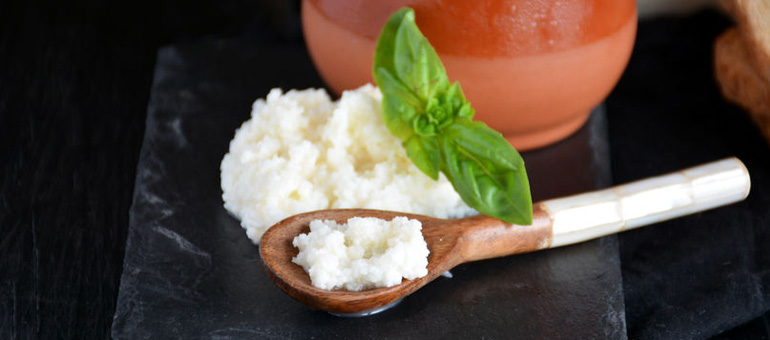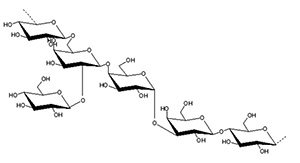
What is KEFIR? Property, benefits and preparation


Kefir: Food ancient flavours
In recent years, with the great attention to nutrition, ‘ancient’ foods are coming back, dating back to historical periods in which modern food preservation techniques (such as refrigeration) did not exist; they used microorganisms and their metabolic processes to guarantee the maintenance of food.
Fermented foods are innumerable; some examples are the sauerkraut of northern Europe, the Kefir made of milk of Caucasian origin and made of water (Tibicos), the Kombutcha, fermented tea typical of the Far East, the Miso (fermented soy and cereals like barley and rice), prunes Umeboshi, typical of Japan, and to mention the traditions of the Mediterranean area, of which we are part, the fermented fish (stockfish), the mother yeast, the Traditional Balsamic Vinegar, the capers and the salted olives.
The origin and characteristics of kefir…the “wellness” drink
In this short article we will discuss the Kefir or fermented milk, a product of Caucasian origin, with a sour and slightly alcoholic taste; it may seem very similar to yogurt, but in fact it has decidedly different characteristics. Milk Kefir is a drink that is obtained from the transformation of milk (of any mammalian species, since the starting product of the fermentation is lactose), in a prebiotic and probiotic mixture, thanks to the presence of about forty microbial strains, between bacteria, particularly lactobacilli, and yeasts (probiotic function) that enter into symbiosis and produce nutrients (prebiotic function).
The first characteristic that distinguishes kefir from yogurt is the presence of mesophilic and non-thermophilic microbial populations, this means that fermentation takes place at room temperature, preferably not above 25°C, and do not require temperatures above 40°C.
Drink rich with beneficial nutrients for cells
To obtain kefir we can start from ‘grains’, consisting of complex polysaccharides, called kefiran, obtained from the metabolism of bacteria and yeast, several of which are not yet known, or from a starter of standardized microorganisms.

Structure of Kefiran (Prado et al 2015)
Lactose, “milk sugar”, is transformed into lactic acid, a small part of acetic acid, short chain fatty acids reputed to be excellent nutrients for our intestinal cells and for the bacteria, carbon dioxide and a small part ethyl alcohol. They are also a source of vitamins, in particular B2, B12, D and K, minerals such as calcium, magnesium and phosphorus and enzymes, such as beta-galactosidase, which makes the drink tolerable even to people intolerant to lactose. The term Kefir derives from the Armenian ‘Keif‘ which means ‘well-being’.
Consumption of kefir and the body’s responses
Those who usually consume Kefir claim to perceive a better state of health, attributable to the same characteristics of this ancient drink. Several studies ‘in vitro’ and ‘in vivo’ confirm the immuno-modulatory activity; strengthening the intestinal barrier, increasing the production of anti-inflammatory molecules and inhibiting that of pro-inflammatory molecules (known as cytokines) improve the state of health of subjects suffering from diseases of different nature. It also has antimicrobial and bactericidal activity against various pathogens including Salmonella, Shigella, Helycobacter, E. coli and against Candida albicans and Clostridium difficile.
How to make Milk Kefir?
 The preparation is extremely simple since it involves placing a tablespoon of Kefiran granules or a standard culture bag for kefir in a liter of milk and allowing it to ferment at room temperature.
The preparation is extremely simple since it involves placing a tablespoon of Kefiran granules or a standard culture bag for kefir in a liter of milk and allowing it to ferment at room temperature.
Subsequently (the fermentation time depends a lot on the environmental conditions and can vary from 24 to 48 hours between summer and winter) the granules are separated from the fermented milk to preserve this product in the fridge and use the culture for a new fermentation. I recommend using a glass bottle and covering with a napkin during fermentation.
To conclude, in the age of antibiotic resistance, the consumption of fermented foods can prove a great help to our health.
Bibliography:
BAKKEN Johan S. (2014) Staggered and Tapered Antibiotic Withdrawal With Administration of Kefir for Recurrent Clostridium difficile Infection, Clinical Infectious disease
BOTTAZZI Vittorio (2004) Latte-fermentati funzionali probiotici. ‘Nuove opportunità per il benessere dell’uomo’ – Elite Communication Edizioni Scientifiche.
CHEN Y.P. et al (2012) Lactobacillus kefiranofaciens M1 isolated from milk kefir grains ameliorates experimental colitis in vitro and in vivo. American Dairy Science Association
SANDOR ELLIX KATZ (2016) Wild Fermentation: The Flavor, Nutrition, and Craft of Live-Culture Foods. Ed. Chelsea Green Publishing Co
PRADO Maria R. et al (2015) Milk kefir: composition, microbial cultures, biological activities and related products. Frontiers in Microbiology
Article by:
Nutritionist Dr. Maria Elena Cafagna
www.nutrizionistacafagna.it – info@nutrizionistacafagna.it
The diet tips, written in the article, are not intended to be a substitute for a personal nutrition plan and are to be adapted to specific cases.
Photo: 123RF Archivio Fotografico | ©Luis Mario Hernndez Aldana , 65511616, 2018-01-17
- On 19 January 2018



